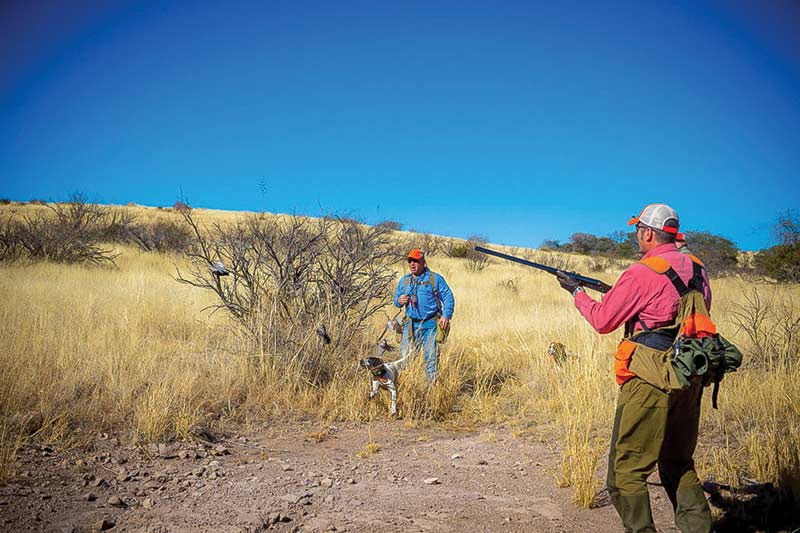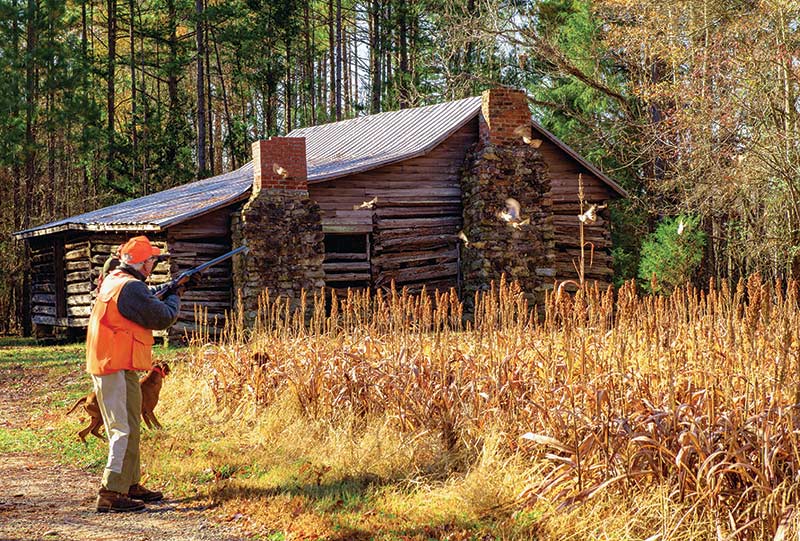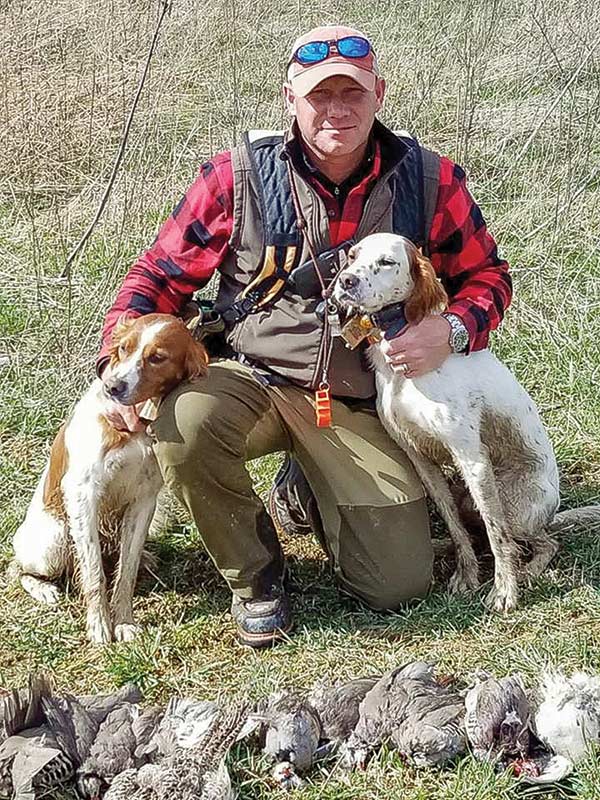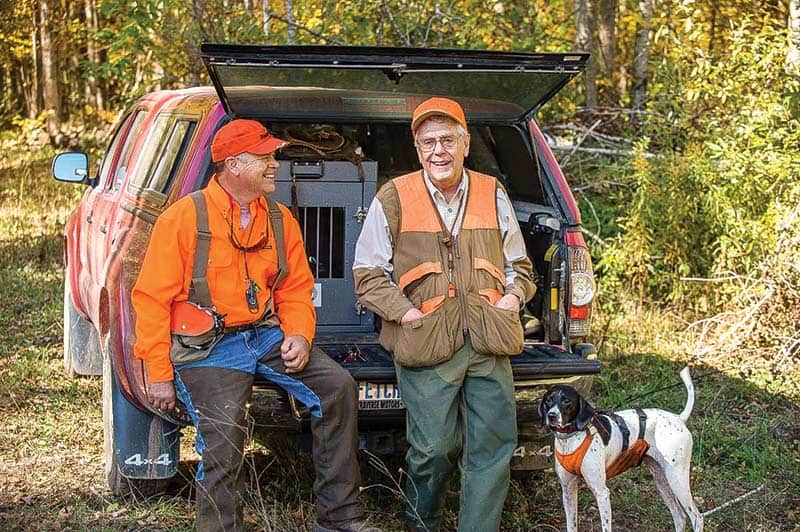Guide Advice
The Hopes Of The Hunting Pros
It’s dark when you pull up to the only breakfast place in town, but your guide is already there. How do you know? His is the pickup with dog boxes in the bed, in front of a trailer he’s towing, which is full of … you got it … more dogs. Your guide knows where the birds are, his dogs are sharp as tacks and he wants the day to be your trip of a lifetime. It’s “team play” from here on out and here’s what he hopes you’ve done in anticipation of your hunt.
These outstanding guides represent nearly a century and a half of experience hunting a wide variety of game birds throughout North America. Their goal is to get the client shooting birds over great dog work in some stunningly gorgeous settings. Take their advice for a great 2023–24 season!
Don Brown, Virginia — Don Brown has spent over 30-years as a wild bird hunting guide for ruffed grouse, woodcock and bobwhite quail. He’s well-known for his string of excellent Vizslas. Bring your own dog if you wish, but Brown’s one request is you do some pre-trip training and conditioning.
“I never mind a sport bringing his own dogs to hunt over,” Brown said. “That’s the magic of bird hunting. However, the one thing I wished hunters would do is to bring a dog or a string of dogs that would handle. Too much time on many of my hunts are spent looking for a client’s dog that really is a self-hunter. Sometimes the dogs range off, other times they won’t listen, and still other times they bust birds. I can provide a training session for clients if that is what they want. But if they’re booking me for a wild bird hunt then we all should have the same expectation, which is to shoot birds over pointed flushes. To do that you’ve got to have a trained and conditioned dog.”
Dave Brown, Dave Brown Outfitters, Saskatchewan, Canada and Arizona — Brown, no relation to Don, is a covey bird specialist. “I start my season in September hunting Hungarian partridge and sharp-tails on Canada’s Saskatchewan Prairie,” he said. “When the weather gets cold I move south to Arizona where I guide for Gambel’s, Mearns and Scaled quail. I like my clients to get up close to a dog when it’s on point and then to aggressively move past the point until the birds are in the air. Dogs are a threat to the birds so if the hunter doesn’t quickly get up to the point and flush the covey, then the birds are likely to run off. Covey rises can intimidate some shooters, mostly because they get confused by all the action. When the covey is in the air, pick one bird and stay with it until it falls. Rushed shots resulting in poor gun mounts are a major reason my clients miss. Practice your gun mount so it’s an instinctive motion. Shoot a clays course or mount your shotgun in your living room. Just be sure that your mount is smooth and solid.”
Mike Thompson, Eaglerock Setters, Central Pennsylvania — Thompson guides for three different species of birds: pheasant, Ruffed grouse and woodcock. He also breeds English setters and is a trainer for just about every other breed. When it comes to a hunt, he wishes his clients would pause for a moment and think. “Bird hunting is much more than just harvesting birds,” he said. “I wish all of the clients who hunt with us would take a moment and ponder that they’re doing more than just hunting. They’re preserving and continuing a tradition and a lifestyle. A bird hunt is a holy union between dog and handler and between guide and gunner. Nowhere else can we touch the souls of those who have gone before us as in upland bird hunting over dogs.”
Stephen Faust, Stoneybrook Outfitters, North Carolina — Depending on the time of year, Eukanuba pro trainer Faust guides for grouse and woodcock in Minnesota, Virginia and North Carolina. Hunting coverts of primary and secondary growth isn’t always easy, and his advice is to be prepared for a day in the uplands. “My clients don’t need to be Olympic marathoners, but they’ll have a better hunt if they’re in decent physical shape. Our coverts are big but we don’t race through them. We hunt slow and thoroughly. Grouse and woodcock live in wild places that are far off the beaten path. Walking can be difficult, so break-in your new hunting boots long before the season. Add moisture-wicking socks to those comfortable boots and get your legs conditioned. If you’re in good shape the rest of the day will be awesome.”
Tracey Lieske, Wild Wing Lodge North Outfitters, Kentucky and Michigan — For the past 25 years, Tracey Lieske has guided hunters for a wide variety of gamebirds in Idaho, South Dakota, Texas, Tennessee and Kentucky. He’s currently splitting his time between Michigan and Kentucky and has one piece of advice. “Shoot clay targets that simulate the kind of birds you’ll see on a hunt. Don’t worry about practicing bateaus, springing teal, or rabbits. For bird hunting, every shot needs to be ball cap height or higher. Some are going away, some are crossing, and others are incoming. Specialized techniques like a snap shot for Ruffed grouse in thick cover is ineffective on a covey rise of Huns or Bobwhite quail. Work on the kind of shots you’ll see on a hunt and you’ll have an outstanding day.”
These outstanding guides represent nearly a century and a half of experience hunting a wide variety of game birds throughout North America. Their goal is to form a team with their clients, one that focuses on shooting birds with great dog work in some stunningly gorgeous settings all of which makes us excited for the 2024–25 season.
DaveBrownOutfitters.com
StoneybrookGordonSetters.com
Tracey Lieskye — [email protected]








